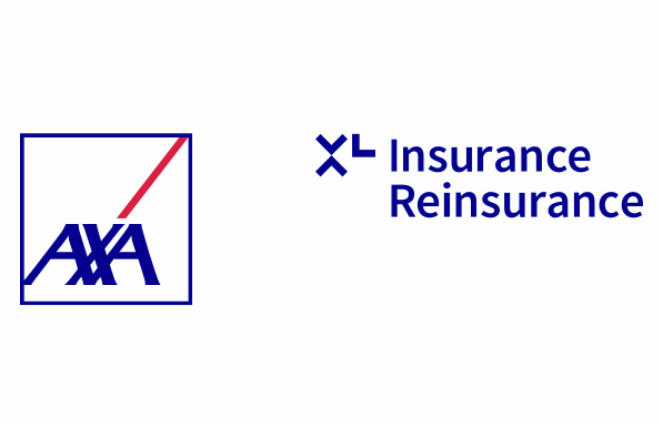AXA XL reducing nat cat exposure, making active use of retrocession
AXA XL, the commercial property and casualty insurance and reinsurance arm of the AXA Group, is targeting a reduction in its natural catastrophe exposure over the coming years, as it looks to bring its business results to a sustainable and profitable level.
 Part of this is a drive to reduce exposure to natural catastrophe events and to achieve this AXA XL will make active use of retrocessional reinsurance, which likely means a growing use of alternative capital sources at the same time.
Part of this is a drive to reduce exposure to natural catastrophe events and to achieve this AXA XL will make active use of retrocessional reinsurance, which likely means a growing use of alternative capital sources at the same time.
In announcing its strategy and targets this morning at an investor day, AXA highlighted the opportunity to achieve better profits, while at the same time reducing volatility in the results of its AXA XL unit.
Right now, the company sees an improving rate environment across P&C insurance and reinsurance and AXA believes that we are currently seeing a hard pricing cycle “with legs” and that could persist, with higher levels of rate achievable going forwards.
It’s the right time to double-down on profitability, as well as on the mix between retained and ceded risks, plus how the company leverages different sources of capital and capacity to achieve its active retrocessional goals.
Among the key strategi actions announced by AX CEO Thomas Buberl this morning, one is particularly targeted on AXA XL.
Strengthening the underwriting performance of the commercial P&C business, across insurance and reinsurance, is a key strategic goal running through to 2023 and in AXA XL’s case that means prudently reducing the amount of peak natural catastrophe exposure retained and being smart when it comes to using retrocession and other capital sources.
AXA wants to see its Group P&C combined ratio down at 93% each year by the end of 2023, an ambitious target and one that to achieve will require a significant focus on moderating volatility, particularly from peak perils and frequency weather impacts.
AXA XL has already been taking underwriting actions in recent years and has adjusted its retrocessional reinsurance program to support them, while continuing to make use of alternative capital within its business, both as supportive capacity from which it can earn fees, as well as pure retro hedging capacity.
Line sizes have been reduced company wide and when it comes to nat cat risk the cession rates to retro and alternative capital providers will have assisted in this goal.
Now, the goal is to further reduce the volatility within the nat cat book at AXA XL, as the company looks to get its combined ratio down to a lower level on a more consistent basis.
At this point in the market cycle, it looks like AXA XL will achieve this through rate on the inwards side, as well as higher cessions and greater use of third-party capital on the outwards.
In the higher rate environment AXA XL can selectively prune the nat cat book exposures, while likely leveraging other sources of capital and retrocession to grow profitably in other areas, all of which should have the effect of reducing this volatility in its P&C combined ratio over time.
AXA XL expects underwriting actions taken this year and next to drive the P&C portfolio into profitability, with underlying earnings of around EUR 1.2 billion and combined ratio of around 96% targeted for 2021.
That’s based on a 2 points higher nat cat load for the year as well, which AXA believes to be a more prudent budget for catastrophe losses it seems.
Part of achieving this will be maximising on price increases in property catastrophe reinsurance, while at the same time reducing worldwide exposures.
With AXA XL expecting an active use of retrocession to be a key lever in helping it deliver better underwriting results.
AXA XL will aim to halve its net retention limit on new risks across the portfolio, as part of this effort, suggesting potentially much higher cession rates to retrocession and the firms alternative capital partners going forwards.
The upshot is a target of a 2% improvement in the combined ratio in 2021, even with a 2% uplift in the nat cat load for the year.
All of which suggests AXA XL making strategic and likely increasing use of third-party and alternative reinsurance capital, bringing investors into its business model to help moderate its results, deliver fee income, while also enabling it to maintain market share in key peak zones as well.
The capital markets and insurance-linked securities (ILS) investors have been key to AXA XL’s business for a number of years now, as the company embraced the use of third-party capital.
Going forwards it appears they may have an even larger role to play, as AXA looks to get the XL book to sustainable profitability in the most effective manner.
AXA XL reducing nat cat exposure, making active use of retrocession was published by: www.Artemis.bm
Our catastrophe bond deal directory
Sign up for our free weekly email newsletter here.
Original Article Posted at : https://www.artemis.bm/news/axa-xl-reducing-nat-cat-exposure-making-active-use-of-retrocession/
